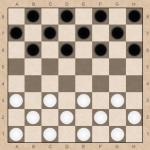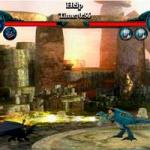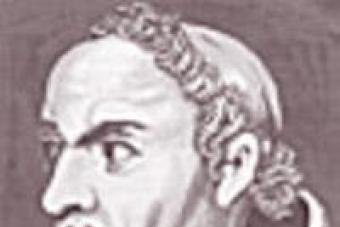Chania tattoo meanings are twofold: protector and avenger, wise guardian and cunning demon, all-consuming passion and bitter regrets.
Chania Tattoo Meaning
First of all, the demon Chania or Hannya is a very memorable bright and imaginative character. Especially on the body, the colorful image of Chania will look outstanding.
In Japanese culture, demons are not strictly negative characters. They are rather spirits and have a protective function. Chania is depicted as a talisman. This image can be compared with a guardian angel.

The theatrical mask itself is made in such a way that on the one hand it looks intimidating and angry, and from a different angle it reflects suffering, torment and regret, it seems to be sobbing inconsolably. This requires a special skill of execution. Chania personifies the suffering soul, who carried out revenge, but did not find peace.

The history of the appearance of the image
The prototype of the Japanese demon is considered to be the Tibetan guardian, the guardian of Buddhism, the wise Hannya, the owner of the snake mask.
Another legend is connected with the Japanese mask. The girl fell in love with the wandering monk, fell in love passionately and selflessly. But he did not reciprocate, continuing his wanderings. The girl was seized with resentment, anger and anger, for neglecting a sincere feeling. These feelings made her a demon, empowering her.

Just having been reborn, she went to take her revenge. I overtook that monk and punished him, burning him with fiery breath. But regret and disappointment overtook her. Since then, a lonely demon has been wandering around, either cruelly punishing insensitive men, or moaning about lost love.
Many characters and images of Japanese culture and mythology have a dual meaning. So Chania serves to understand that anger and jealous rage can be caused by deep disappointment and despair. A long life is meant for understanding, forgiveness, compassion.

Another legend says that the monk-sculptor Hanya-bo created a double mask for ritual dances. The mask is horned, and the mouth on it is grinned in a sharp-toothed smile. But when looking sideways, it seems that the demon is crying. This image itself is far from femininity, but it is the woman, absorbed by jealousy and anger, that Chania personifies.
Interesting! In Japan, to this day, two fingers put to the head is a gesture that means that a woman is “going crazy” from jealousy for her man.

Hannya looks very memorable. Two bull horns, an aggressive look, a fanged smile from ear to ear. Both the mask and the demon are always depicted in bright colors.
The saturation of the color also has its own meaning, expressing the degree of anger and passion. Scarlet color means all-consuming passion and strong indignation. Pale tones speak of calmer feelings, love, possessive feelings, the desire to hide the object of passion from the world, to appropriate.

The breath that comes out of the demon's mouth symbolizes the destruction that brings excessive passion.
There are images of Chania with a third eye. This image is intended to emphasize the direct meaning of the word. Chania translates as "wisdom". Here the mystical additional eye is a sign of superhuman vision, insight. Look deeper, see more.
Instruction
Japanese tattoos have a long and rich history. The first evidence of Japanese tattoos can be seen on 5,000-year-old figurines found in tombs. In addition, texts dating back to the 3rd century CE say that Japanese men decorated their faces and bodies with mi. Centuries later, mainly due to the powerful cultural influence of China, tattoos became taboo and were used mainly for criminals. An integral part of the traditional Japanese tattoo was a complex system of symbols that was used to reveal a person's character. It was believed that a tattoo could even change it.
Sakura is a symbol of resilience. Beauty lies in the strength she possesses to survive in the harsh. Blooming means the cycle of human life: birth, flowering, death. The Japanese see this as a direct representation of how life should be. They believe that each day should be lived to the fullest and that the awareness of death should only make us stronger.
The brightly colored carp have a special symbolism in Japanese culture, and their image can even be seen in many temples. The myth says that if a carp can swim upstream to the gates of heaven, it will turn into an a. The image of a carp symbolizes luck, strength, ambition and individuality. Therefore, if you are looking for a tattoo that symbolizes struggle and perseverance, then the Koi carp is the perfect choice.

The mythical dragon is what Japan is usually associated with. Dragons occupy an important place in Japanese culture. A dragon tattoo has many meanings, such as freedom, courage, wisdom, power, strength, and even supernatural abilities. The colors used in the image of the dragon are of great importance, so you need to choose them very carefully.

Tattoo Japan is an ancient oriental style that has deep roots and a rich history. Japanese tattoo artists have long been held in high esteem not only in their homeland, but throughout the world. Influential people and even monarchs wore drawings by Japanese masters. Traditionally, tattoos from the Land of the Rising Sun depict dragons, fish, tigers, demon masks, flowers and ornaments.
The Japanese are considered a people who keep their traditions. In the old days, each element of the picture carried a certain meaning. Any detail of the tattoo had to be done in accordance with the canon. Today, in times of globalization, when mentioning Japan tattoos, people no longer mean the old classical school of ancient masters, but also new directions. Many masters around the world studied the art of Japanese tattooing and transformed the old style, adapted it to the present, introduced new creative elements into it.
History of Japanese Tattoo
Traditionally, Japanese tattoos were applied with a special bamboo tebori stick. The application process took many hours. Japanese tattoos in most cases are voluminous, these are large tattoo sleeves or a tattoo suit that covers most of the body. The process of training a tattoo artist in Japan was long and difficult. The master first of all had to learn patience, so he was allowed to work only after a few years.
Interesting Facts
In Japanese tradition, the tattoo is closely associated with the mafia. Modern authorities still have a negative attitude towards tattoos. People with tattoos often fall under the disgrace of the authorities, they can be kicked out of the pool or any other public place. Therefore, the Japanese do not make tattoos in prominent places and do not show them in society.

Japanese Tattoos - Main Plots
Japanese Carp Tattooone of the most popular stories. The symbol of the carp became popular thanks to the legend of Makatsuge, a fish that, through its perseverance, reached the Dragon Gate and turned into a dragon fish. In the legend, this fish was a carp. Carps (or as they are called in their homeland - Koi) symbolize perseverance, the ability to swim against the current. Traditionally, a carp tattoo is considered masculine, and embodies masculine energy.
Turtle Tattooamong eastern peoples it symbolizes wisdom and the ability to predict the future.
dragon tattoo- a symbol of the sun, good luck and longevity. The Japanese depicted dragons with three fingers on their paws. According to legend, the dragon is considered a sacred guardian spirit and is revered by people.
Tiger Tattoo- a symbol of courage, strength, courage and nobility. The Japanese believe that tigers are able to ward off evil spirits.
snake tattoo- protection from misfortunes and failures, snakes have superpowers that help people avoid troubles. The image of a snake curled up at the hammer brings good luck, wealth and prosperity.
Chania mask tattoois an image of an ancient spirit into which a jealous girl has turned. According to one version, this image symbolizes the embodiment of wisdom, and according to another, it reminds people of how destructive it is to succumb to negative feelings.

Men's Tattoos Japan - Japanese Style Tattoos for Men
The Japanese tattoo style is chosen by men more often than women. The first reason is the volume of the drawing. Japanese tattoos are almost always very large and bright, it is easier for a man to decide on such a bold step. Tattoo - a suit or sleeves in the Japanese style is a sign of reverence for Eastern culture, their ancient traditions and symbols. The Japanese Carp Tattoo is considered a traditional male tattoo.






Japan Women Tattoos - Japanese Style Tattoos for Girls
Girls do not often decide on a Japanese-style tattoo, but there are also brave lovers of a bright symbolic oriental style. Tattoos with chrysanthemums, peonies and can often be found among women. Girls cannot always decide on sleeves or a large pattern on the back, but even a small tattoo stylized as a traditional Japanese tattoo brings a special style and color to the image of a girl.





The appearance of tattoos in Japan is attributed to the Jomon period (10,000 BC ~ 300 BC). Jomon means "rope pattern". Clay figurines (dogu) depicted various spheres of life of the people of ancient Japan, and many scientists believe that the painting of the faces and bodies of these figures is a kind of first tattoo.
A description of a Japanese tattoo is found in a Chinese manuscript of the 3rd century "Gishiwajinden", this is the oldest mention of Japan.
The Chinese author describes the Japanese with surprise, emphasizing that they often make drawings on their faces and other parts, most likely for some kind of ritual protection while hunting or fishing. In the future, the application of various patterns on the body began to be social in nature, determining the status of a person.
The Kojiki (712 AD), the first Japanese printed book, describes two types of tattoos. The first type is a sign of high social status, and the second is a sign of a criminal. Later, in the Annals of Japan (Nihongi/Nihon shoki), completed in 720 AD, it is described how a man named Azumi Murajihamako was tattooed as a punishment for betrayal. This is an example of the punitive use of tattoos. At the beginning of the Kofun period, the tattoo was normally perceived by society, but the situation changed greatly by the middle of the era. According to some researchers, the tattoo was a hallmark of social outcasts.
One of the key changes was the practice of tattooing as a form of punishment in 1720, which replaced the amputation of the nose and ears. Tattooing as a punishment was not applied to the samurai class. According to the Yoshimune code, robbers as well as murderers were sentenced to death. Crimes such as extortion, fraud and forgery were punished by tattooing. The criminals were tattooed in the form of a black ring around the arm for each crime committed, or in the form of a Japanese character on the forehead. This custom lasted until its abolition in 1870 and in total this practice of punishment was used for 150 years.
In the future, with the advent of yukiyo-e art, the attitude towards tattooing and style changed. Tattooing became a popular art among the lower class. There are two reasons for the appearance of full-body tattoos in Japan: the existence of sumiye, black and white ink drawings, and the emergence of fashion in clothing. Before the advent of yukiyo-e drawings, the ink painting technique was brought to Japan from China. At the beginning of the period of artistic tattoos, only the outline of the drawing was applied. Such tattoos were called sujibori, contour tattoos. Only a few colors were used for application: black ink, bright red and brown. The technique of bokashibori (bokashibori), shading, began to be used in the tattoo, a feature of this style is the gradation of black, by analogy with the drawing technique, when strokes of different strengths are made with ink and brush. The use of several colors of paint gave rise to graphic tattooing.
The idea of creating tattoos in the whole body came from the samurai, or rather from their clothes - jinbaori- military tunic without sleeves. On the back of the jinbaori, the samurai made their favorite patterns, most often on a heroic theme, to show their courage and pride. Some of these drawings depicted protector gods or dragons.
The forerunners of the modern Yakuza used the tattoo as a sign of their status. Among the Yakuza, getting a tattoo was a test of strength, as traditional Japanese tattooing was very time consuming and quite painful. To apply a tattoo on the whole body, only one thing is required - patience to endure so much time and pain. In addition, the Yakuza began to perceive their tattoos as part of their costume in the Edo era, and this was common for those days. Once tattooed, the yakuza undergo ceremonies of expulsion from normal society and automatic inclusion in a closed social group. From this point on, a yakuza representative can no longer marry a woman who comes from a "good" family, he will not be hired by the institution, unless it is under the control of the underworld.
The peculiarity of the Japanese tattoo is not only in the original technique and carefully preserved traditions, but also in images that are amazing and exotic for the European eye. At one time, it was the unusualness of these images, combined with the high skill of tattooing, that made it possible for Japanese tattoos to capture the minds of European inhabitants. It was so mysterious and an order of magnitude more virtuosic than what they did in Europe itself at that time.
The ban on tattooing, which appeared in Japan in the 19th century, can also be assessed from different angles. It seems that this stopped the development of Japanese tattoo as an art, but on the other hand, it allowed to keep traditions unchanged, which otherwise would almost certainly have been blurred in favor of populist tastes and demands. By the way, something similar is happening now. Interest in tattooing in Japan is growing and at the same time its quality is falling. It is no longer uncommon to see Horishi (a tattoo artist) with an electric machine in his hands. But it's so convenient! So many people can be processed. What about traditions? What are traditions? You won't be fed up with them.
However, perhaps, it is not necessary to exaggerate. It may well be that we are witnessing not just a decline, but a new revolutionary leap in Japanese tattooing. In the end, many arts have successfully endured all the evolutionary vicissitudes and are doing well in the modern world.
I am glad that, despite all the changes, something in the Japanese tattoo remains unchanged. Namely, the basic principles that make it so different from other traditions of tattooing. For example, Celtic or Polynesian. These are the principles:
- Asymmetry, in contrast to the classic Maori tattoo from New Zealand and often senselessly scattered motifs in European tattoo;
- Clear identification of leading motives;
- The introduction of small motifs, which sometimes braid the leading motifs and densely fill the surface of the body;
- Repetition of small motifs;
- The figurativeness of the leading motifs, and the secondary motifs, as in tribal communities, are geometric;
- Outlining most motifs with a decorative outline (the old masters considered the edges of the composition to be the most valuable places and set them off);
- Filling the surface of motifs with intense color;
- Rich color variety;
- The use of knowledge of human plastic anatomy for the expressiveness of a tattoo. Muscles during tension and relaxation, as it were, give the composition movement, making it very expressive. Nipples and the navel have long been used not to express irony or sexuality, which was typical of European tattoos among criminals, but as elements of motifs - as a dragon's eye, etc .;
- The dynamism of some compositions and at the same time the static interpretation of others;
- Development of the details of most compositions and motifs before starting work, or copying them, although today they also allow the implementation of the client's idea;
- Completion of the composition by filling the places on the edges with a geometric ornament, or inscriptions.
While working, classic Japanese tattoo artists use bamboo sticks with needles attached to them. From one to four needles are used to apply the pattern, and a set of thirty needles in the form of a bundle is used to fill the surface of the pattern. This bunch of needles is called "hari".
In the process of performing a Japanese tattoo, there are five phases:
- The first phase (“suji”) is based on applying a sketch of the motif and the entire composition to the skin using black ink or a special dye that is firmly held on the skin. One session is enough to complete this work.
- The second phase is the selection and fixing of the contour with an instrument with one to four needles fixed on it, which are immersed in very thick black ink.
- The third phase is based on pricking the skin with a large number of needles collected in a bundle. This allows you to achieve the desired filling of the composition with color and tone.
- The fourth phase, called "tsuki-hari" (tsuki - to punch and hari - a bunch of needles), consists in a shallow pricking with a small number of needles of significant fragments of the body surface without shading it. The needles are driven into the skin with light strokes with the base of the palm, after which the needles are additionally pressed into the body.
- The fifth phase consists in the fact that during the pricking of the skin, a slight swing is given to the hand. The piercing depth is precisely controlled. The use of this technique allows you to achieve the best effects when shading the surface of the composition. This procedure is the least painful, because it is carefully controlled, and at the same time the most difficult technically.
After each tattooing procedure, the client is required to take a bath. This improves well-being and makes the tattoo more effective. Clients are warned against drinking alcohol, as alcohol combined with the skin pricking just done can lead to poisoning of the body.
The images used by Japanese tattoo artists, with all their diversity, can be divided into only four groups: mythology, religion, plants and animals. Ancient legends and tales about the exploits of fearless heroes have served as an inexhaustible source of inspiration not only for writers and artists, but also for people decorating their skin with similar motifs. I must say that due to the fact that a tattoo of all types of art (and we are not talking about the sacramental "VASYA" or a skull with bones, but about art) is the closest to a person in the physical plane. This gave rise to a special attitude towards her among the Japanese. There was a belief that a tattoo does not reflect the inner world of a person. No. She shapes it. And this or that tattoo can give a person special properties - courage, stamina, strength, etc. Here, tattoos using images of spirits and demons stand apart. It was believed that such a tattoo is a kind of carrier of the corresponding spirit or demon. It is hardly appropriate to list all the Japanese evil spirits here. It's funny to watch how some authors write about Japanese tattooing do it, not nearly caring about what, for example, Nurikabe, a spirit in the likeness of a goblin native to the Slavic heart that makes travelers stray, was actually invisible and, to put it mildly, difficult to portray in any way .
Shown is an old Japanese print depicting Chojun. This engraving served as a model for the creation of many tattoos depicting this literary hero.
Zhang Shun, known in Japan as Rorihakuto Chojun (張順), is a character in the Chinese novel Suikoden, one of the 108 characters, an excellent swimmer, and a pearl diver. Often, like Kintaro, he is shown fighting a huge carp. Unlike Kintaro, Chojun is a young man armed with a dagger, which he often holds in his mouth. The tattoo denotes a strong spirit, and excellent possession of cold weapons.
Kyumonryu Shishin
 Japanese tattoo and vintage engraving with the hero of the novel Suikoden Kyumonryu Shishin
Japanese tattoo and vintage engraving with the hero of the novel Suikoden Kyumonryu Shishin
Kyumonryu Shishin. One of the more popular characters featured in the novel 108 Heroes Suikoden, he is an excellent master of the pole. The body of Kyumonryu Shishin was decorated with the image of nine dragons fighting among themselves. Depicted as a half-naked young man of a ferocious appearance, with fluffy fluffy hair. There are many engravings of the Edo period with images of it, from which many tattoos are made. Symbolizes fearlessness, resourcefulness and excellent command of improvised weapons.
Roshi Ensei
 The engraving shows Ensei cracking down on a robber with a log.
The engraving shows Ensei cracking down on a robber with a log.
Roshi Ensei. He also appears in the novel The Backwaters (Suikoden) under the name Yan Qing. It is known about this martial artist that he tricked his way into the service of the famous martial artist Lu, who refused to accept students. For three years, he spied on Lou's training, adopting a style known as the "sacred fist" from him. However, he failed to keep his cunning secret when he dealt with a gang of robbers using Master Lu's ways. When he found out about this, he not only did not drive away the cunning servant, but, on the contrary, made him his official student.
Kwatsuemura Gonzosity
 In the engraving, Kwatsuemura is covered with a tiger skin from a flurry of arrows.
In the engraving, Kwatsuemura is covered with a tiger skin from a flurry of arrows.
Kwatsuemura Gonzoshichi, one of the 108 heroes of the Suikoden. An agile warrior who caught arrows on the fly.
Kayoso Rotishin
 Tattoos depicting Kayoso Rochishin
Tattoos depicting Kayoso Rochishin
Rotisin. Another of the 108 characters in the Suikoden novel, which was a Japanese adaptation of the Chinese novel Shui Huzhuan (River Backwaters). Kayoso Rotishin (Chinese version - Lu Zhi - Shen) is a noble robber of enormous stature who became a monk. His tattoo depicts cherry blossoms flying in the wind.
In one of the episodes, he fights on poles with Kyumonryu Shishin.
Hitentaisei Rikon
 Tattoo and engraving depicting Hitentaisei Rikon
Tattoo and engraving depicting Hitentaisei Rikon
Hitentaisei Rikon. One of the 108 heroes of Suikoden, in the Chinese version, Li Gun. Engraving by Kiniyoshi and irezumi based on it. All the heroes of this work, immortalized in a series of magnificent engravings by Japanese artists, have found their embodiment in tattoos.
Shintunagon Tomomori
 An engraving and sketch of a tattoo showing how Shintunagon Tomomori-no is about to end his life by tying a heavy anchor to his legs
An engraving and sketch of a tattoo showing how Shintunagon Tomomori-no is about to end his life by tying a heavy anchor to his legs
Shintunagon (Taira-no) Tomomori. An active participant in the Gempei War (the internecine war of the Taira and Minamoto clans), a commander who won a number of victories. The engraving and sketch of the tattoo shows the episode when he is about to commit suicide after the devastating battle of Dannoura, where the troops of the Taira clan were finally defeated. Tying a heavy anchor to his feet, he threw himself into the raging sea.
Spirits of dead samurai
Among the plots of irezumi there are images of the spirits of dead samurai - Akugenta and Taira no Tomomori
 Japanese tattoo. Avenging Spirit Taira no Tomomori
Japanese tattoo. Avenging Spirit Taira no Tomomori
Taira no Tomomori became an avenging spirit after he, wounded by arrows, committed suicide by tying himself to an anchor and throwing himself into the sea. He can be recognized by the horns on his headband and the arrows that pierce his armor.
 Japanese tattoo Spirit demon Minamoto no Yoshihara
Japanese tattoo Spirit demon Minamoto no Yoshihara
Minamoto no Yoshihara (also known as Akugenta Yoshihara), who was the elder brother of Minamoto no Yoshitsune (commander of the Minamoto clan), who defeated Tomomori at the Battle of Dan No Ura. Yoshihara himself died 20 to 30 years earlier, during the Heiji Rebellion against the emperor and the Taira clan, being captured and executed. It is said that the body of the executed person turned into a demon or the incarnation of the thunder god Raijin, who struck the executioner with lightning. After that, he destroyed Kyoto with a hurricane.
Kabuki theater character Rybnik Dancity
 Japanese engraving and tattoo showing the episode where Dancity washes away blood and dirt from himself with water from a well
Japanese engraving and tattoo showing the episode where Dancity washes away blood and dirt from himself with water from a well
The character of the play of the Kabuki theater is the fishmonger Dancity. The famous episode is shown where he washes away blood and dirt from himself with water from the well, after he killed, in a fit of rage, his vile father-in-law Giheiji, who provoked him. Despite the murder, he was acquitted, as he stood up for the honor of his wife, taken from him by his evil father-in-law.
Tokubei kabuki character
 Engraving by Utagawa Kuniyoshi depicting the magician Tokubei and sketch of a tattoo
Engraving by Utagawa Kuniyoshi depicting the magician Tokubei and sketch of a tattoo
Tokubei. The prototype of the magician Tokubei, a popular character in many plays of the Kabuki theater, was a real person who lived in the 17th century - the merchant Tenjiku Tokubei. He made a successful voyage to India, visiting many other countries, and returned to his homeland a rich man. Here he wrote a book about his travels - "Report on the voyage to India". However, in kabuki performances, he appears as a great magician who has learned overseas magic, including “frog magic”. At his call, fire-breathing huge toads appear, on which he can fly and kill enemies. According to the plot, this magician is going to seize power in Japan, but after a failure, he commits suicide. In an engraving by Utagawa Kuniyoshi, he is shown sitting on a huge toad.
Valiant Warrior Minamoto no Raiko
 Engraving by Utagawa Kuniyoshi depicting the samurai Raiko and the monster Shutendoji and Irezumi depicting the samurai Raiko and the monster Shutendoji
Engraving by Utagawa Kuniyoshi depicting the samurai Raiko and the monster Shutendoji and Irezumi depicting the samurai Raiko and the monster Shutendoji
Raiko. According to legend, the valiant warrior Minamoto no Raiko, also known as Yorimitsu (948-1021), commanding four samurai, managed to defeat the terrible monster Shutendoji (“Drunkard”), which kidnapped and ate the girls of Kyoto. Utagawa Kuniyoshi's engraving and tattoo shows the moment when the monster's severed head clings to Raiko's helmet.
Japanese Serpent Fighter Tattoos
Serpent Fighters. A certain part of the tattoos shows the heroes of Japanese legends and Kabuki theater performances, who fight with a huge snake. The Japanese have a belief that jealous and rejected women can turn into snakes, and they especially annoy the monks. The theme of snake fighting is devoted to many engravings, on the basis of which tattoos are often created. Tattoos depicting Kayoso Rotishin, who killed a huge snake in one of his feats, are popular. Another snake fighter hero was Saginoike Heikuro, shown in tattoos tearing the snake's mouth. You can also point to Chusenko Teitokuson, who defeated the monster, but died from its poison, Egara no Heita (aka Wada no Heida Tanenaga), as well as Jiraiya and his sister Tsunade, who defeated the werewolf snake Orochimaru.
 Sketch of Irezumi - Kayoso Rochishin (Lu Zhishen) - Suikoden Character
Sketch of Irezumi - Kayoso Rochishin (Lu Zhishen) - Suikoden Character
 Saginoike Heikuro in engraving and sketch
Saginoike Heikuro in engraving and sketch
 Chūsenko Teitokuson engraved by Kuniyoshi and irezumi
Chūsenko Teitokuson engraved by Kuniyoshi and irezumi
Hickashi
 Japanese tattoo. A depiction of Hikeshi, the valiant firefighters of the Edo period, who is shown with his unit's standard.
Japanese tattoo. A depiction of Hikeshi, the valiant firefighters of the Edo period, who is shown with his unit's standard.
Hickashi. This was the name of the city fire brigades, usually created in each quarter from samurai and townspeople, during the Edo period (1600-1868). Japanese cities often burned because the houses were built of wood and paper, so the shoguns began to create similar squads to prevent and extinguish fires. Many firefighters got tattoos for themselves, as they often had to be naked, which was reprehensible. The full-body tattoo served as a hypothetical clothing replacement. Each of the 48 fire brigades of the Edo period had a distinctive banner set up at the fire extinguishing site. The image of a hickashi in a tattoo symbolizes a strong and brave person who consciously takes a mortal risk in the name of fulfilling his duty.
Kiyohime
 Japanese Kiyohime tattoo
Japanese Kiyohime tattoo
Kiyohime (Japanese for “pure princess”) or simply Kiyo is a character in Japanese legend and kabuki theater performances based on it. A young widow (according to other sources, the daughter of a village headman) falls in love with a wandering monk, but he rejects her love (in other versions, he promises to return to her, but deceives). In anger, the woman turns into a huge fire-breathing snake and rushes in pursuit of the monk, and overtakes him in the Dojoji temple. The monastic brethren hide the unfortunate monk inside a huge bell, but the monstrous Kiyohime finds him there and kills him, turning the bell into a red-hot furnace with fiery poison. After that, she commits suicide, and the souls of the monk and the rejected woman become husband and wife. However, the monk's soul, not wanting to remain on earth in the form of an evil ghost, asks to pray for himself and his killer, and after a religious ceremony they go to heaven (though in different places). The symbolism of the tattoo is simple - you can not reject the love of a woman and deceive her in order to avoid such a fate. In women, this tattoo symbolizes the ability to achieve goals at any cost.
Princess Tachibana
 Japanese Tachibana Princess Tattoo
Japanese Tachibana Princess Tattoo
Tachibana - Hime (Princess Tachibana) - the heroine of ancient Japanese legends, the wife of the legendary Prince Yamato - Takeru. She voluntarily threw herself into the raging sea, sacrificing herself to Watatsumi - no kami - the sea god in the form of a dragon who wanted to destroy the ship on which her husband was sailing. On tattoos, she is depicted as a girl fighting a huge dragon. A symbol of self-sacrifice for the sake of a loved one, and all-conquering love.
Images of women in traditional Japanese style
The images of beautiful women in the traditional Japanese style - oiran (courtesans) and geisha, the heroines of novels and engravings of the old masters, are widely represented in irezumi. Most often they are purely decorative, without carrying an additional semantic load - just admiring beauty, grace and youth. But among the images, several specific characters can be distinguished.
 Tattoo depicting courtesan Jigokudai
Tattoo depicting courtesan Jigokudai
Oiran (Courtesan) Jigokudai. Jigokudayu is a famous courtesan from the Muromachi period. She was the daughter of a noble samurai, who was captured by enemies and sold to a brothel. Zen - the Buddhist monk Ikkyu instructed her on the path of truth, and allowed her to free herself from the fate that befell her. She took the name Jigokudai, which means "Infernal courtesan"), believing that the misfortune that befell her is a karmic punishment for an unrighteous life in previous incarnations. She is often depicted surrounded by the skeletons and spirits of other courtesans and cursed people, and her kimono has scenes of hellish torment and demons, and she is accompanied by cherry blossoms. All these are symbols of the illusory nature and transience of life in the Buddhist sense. Realizing all this, Dzigokurai achieved enlightenment and wisdom, becoming the protector of all those who stumbled in this life.
 Princess Tsunade tattoo
Princess Tsunade tattoo
Tsunade-hime ("hime" - princess) is the heroine of the Japanese "Tale of the Valiant Jiraiya", on the basis of which the play for the Kabuki theater was written. There she acts as a sorceress who owns the magic of snails, whom the main character, Jiraiya, marries. This image became known and popular after the creation of the manga and anime "Naruto", where Tsunade and Jiraiya are bred into ninjas who take revenge on their enemies. On tattoos, Tsunade is depicted as a woman in traditional Japanese attire, armed with a naginata - a terrible bladed weapon in the form of a curved sword on a very long handle.
Princess Tamatori
 Japanese Tattoo and Sketches of Princess Tamatori
Japanese Tattoo and Sketches of Princess Tamatori Princess Tamatori (Tamatori-hime) or Ama. According to legend, the gift of the Chinese emperor - a magical pearl, which he sent to his in-laws from the Fujiwara clan, was stolen by the king of sea dragons during a storm. Fujiwara no Fuhito decided to return this treasure to the family. During his search, he met a beautiful diver named Ama (also called Princess Tamatori in other versions of the legend) and married her. Ama wanted to help her husband recover the pearl, so she stole it from the dragon king. Fleeing from the persecution of sea monsters, she cut her chest (according to other versions - her stomach), where she hid the jewel. The gushing blood hid her from her pursuers, but after getting ashore, Ama died from her wound. Thus, she managed to prove her loyalty to the clan and her husband, from whom she gave birth to a son who continued the glorious family of Fujiwara. In honor of her, the Japanese pearl divers began to be called ama.
Over time, the legend has acquired details that are very piquant. So, for example, there were versions where Ame, in order to get into the dragon's palace, had to surrender to the octopuses carrying his guard. In Japanese art, with further transformations of the legend, many erotic images of divers girls entering into a love affair with octopuses appeared.
About scenes from Kabuki and No theater performances
 Japanese tattoo showing an actor as a hanya.
Japanese tattoo showing an actor as a hanya. The plots of many tattoos are associated with traditional Japanese Kabuki and Noh theaters, and irezumi reproduce magnificent engravings showing scenes from performances or actors portraying certain characters.
Women's roles in these performances in the past were played by men, which was due to a government ban, but after the Second World War, this ban was lifted, and the actresses were also able to participate in period plays. On tattoos, although they are made according to old engravings and posters, and show men in the role of women, one should still see beautiful girls with the attributes of their role.
 An old poster showing an actor as a hanya and a sketch of a tattoo showing an actor or actress as a kitsune werewolf fox.
An old poster showing an actor as a hanya and a sketch of a tattoo showing an actor or actress as a kitsune werewolf fox.




